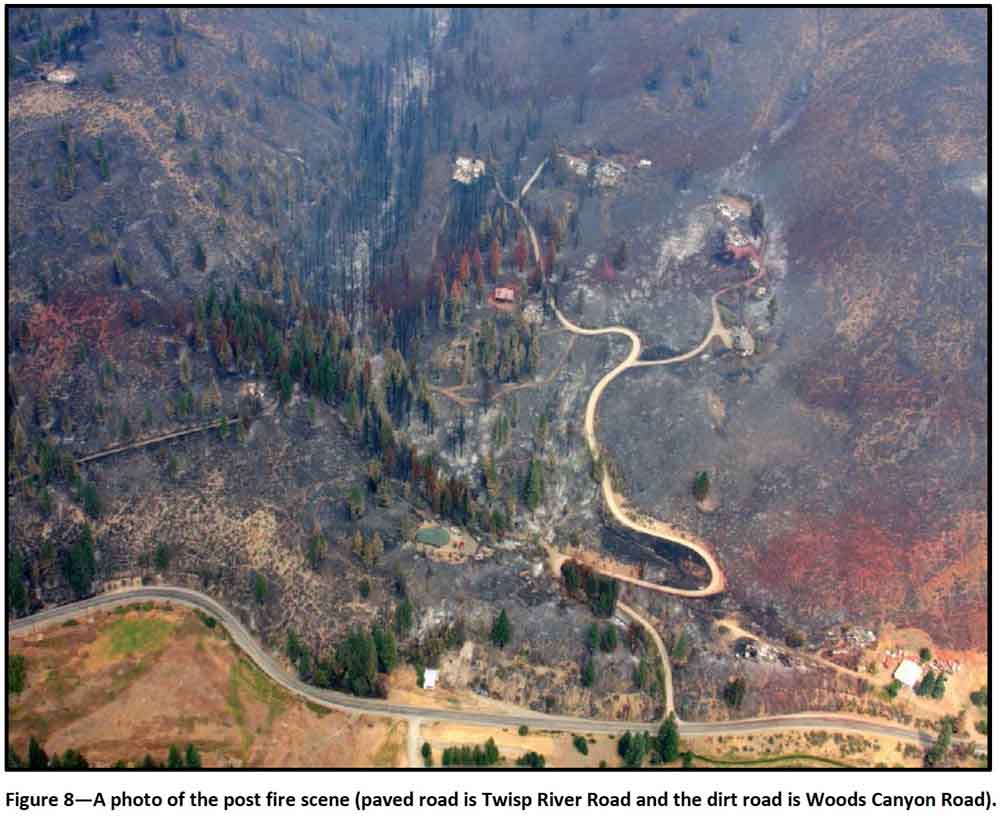On November 18, the day a preliminary report was released for the Twisp River Fire, the firefighter who was severely burned on the incident west of Twisp, Washington left the Harborview Medical Center in Seattle.
Daniel Lyon Jr., 25, one of four people in Engine 642 assigned to the fire on August 19, left the vehicle after it crashed while the crew was trying to drive to a safety zone through a very active part of the fire. He made his way through flames to a road where he was found by another firefighter. The two of them ran down the road until they found an Emergency Medical Technician Paramedic who provided initial treatment before Mr. Lyon was transported by ground ambulance and then a helicopter to the burn unit in Seattle.
The other three firefighters in Engine 642 died in the vehicle, according to the corner’s report, from smoke inhalation and thermal injuries. They were Richard Wheeler, 31; Andrew Zajac, 26; and Tom Zbyszewski, 20. All four were employees of the U.S. Forest Service working on the Okanogan/Wenatchee National Forest out of Twisp, Washington.
After spending three months in the hospital and undergoing 11 surgeries, including several skin grafts, Mr. Lyon still has a long road to recovery ahead of him. He suffered third degree burns over nearly 70 percent of his body. The tips of his fingers had to be amputated because his hands were so badly burned, said Dr. Nicole Gibran, director of the burn center, at a news conference on Wednesday.
In addition to the four firefighters in Engine 642, a three-person dozer crew was entrapped when a wind shift caused the fire to spread in their direction. The extreme fire behavior that resulted, forced all fire personnel on the right flank of the fire to seek safety zones — if they could.
As the fire overtook them, the dozer crew initially parked the dozer near a garage and took refuge between the structure and the tractor. When one of them exited the dozer, he left his shelter, thinking he would not need it. Intense heat drove the three of them inside the garage. After the building began burning, they went outside and huddled under two fire shelters on a dirt road.
Below is an excerpt from the preliminary report, from the section about the engine crew’s accident:
…The right side “point of contact” saw Engine 642 driving up to him, so he whistled and swung his hand over his head, indicating they needed to turn around and get out. The “point of contact” yelled, “RTO! [Reverse tool order!],” meaning that all crews needed to follow their escape route back down the road to the safety zone. Engine 642 turned around in the road and was the first engine to head toward the escape route. One of the other 3 engines turned around at the “Y,” and another engine drove up to house 4 to turn around. The fourth engine remained at house 3.
As Engine 642 drove down toward the safety zone, the road was completely obscured by smoke. The engine jolted and dropped down as if a tire had popped. They kept driving downhill, but they had zero visibility, and the engine went off the road. The engine came to a stop, and the surviving firefighter [Mr. Lyon] got out and was immediately engulfed in flames. He went through the flames and made his way to the road…
The document released on November 18 is called an “Interagency Learning Review Status Report”, one of many stages of the Learning Review process that was adopted by the USFS in 2013. It only includes facts, some of them, that have been developed so far in the investigation. It contains no conclusions or recommendations, and does not place blame. It does, however, present some very general “questions to initiate dialogue” related to protecting structures, the use of Type 3 Incident Commanders on a developing fire, communications (as usual in EVERY report), and the use of fire weather forecasts. The narrative in the report is “abridged”, with the full narrative expected to be part of the final report. Eventually a Safety Action Plan with recommendations will released and made available to the public, according to the preliminary report.
The preliminary report released on November 18 can be downloaded here.
The images above are from the report.

